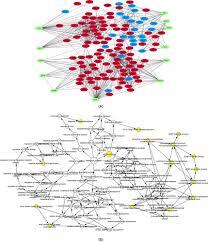more
Identifying hub genes and dysregulated pathways in Duchenne muscular dystrophy

This research explores differentially expressed genes (DEGs) and hub genes in Duchenne muscular dystrophy, analyzing their role in disease progression and treatment targets.
more
Moving towards successful exon-skipping therapy for Duchenne muscular dystrophy

This review explores exon skipping therapy for Duchenne muscular dystrophy, discussing preclinical and clinical trials, therapeutic challenges, and future developments.
more
The Dysferlinopathies Conundrum: Clinical Spectra, Disease Mechanism and Genetic Approaches for Treatments

This review examines dysferlinopathies, highlighting clinical features, molecular mechanisms, genetic therapies, and the latest research in treatment development.
more
Duchenne muscular dystrophy: promising early-stage clinical trials to watch

This review highlights early-stage clinical trials for Duchenne muscular dystrophy, covering exon-skipping therapies, gene therapy, and novel treatment strategies.
more
Wnt7a is Required for Regeneration of Dystrophic Skeletal Muscle

This study examines the role of Wnt7a in muscle regeneration, highlighting its necessity for muscle repair and its potential as a therapy for Duchenne muscular dystrophy.
more
Isolation of small extracellular vesicles from regenerating muscle tissue using Tangential Flow Filt

This study presents an optimized protocol for isolating extracellular vesicles (EVs) from regenerating muscle tissue using TFF and SEC, ensuring purity and efficiency.
more
Satellite Cell Heterogeneity in Skeletal Muscle Homeostasis

This article explores the role of satellite cell heterogeneity in skeletal muscle homeostasis, highlighting its impact on muscle repair, self-renewal, and differentiation.
more
Vamorolone improves Becker muscular dystrophy and increases dystrophin protein in bmx model mice

This study highlights vamorolone’s ability to improve Becker muscular dystrophy by reducing inflammation and increasing dystrophin levels in BMX model mice.
more
The X-linked Becker muscular dystrophy (bmx) mouse models Becker muscular dystrophy via deletion of

This study introduces the BMX mouse model for Becker muscular dystrophy, providing a new tool for studying disease mechanisms and testing potential therapies.
more
Interrogation of Dystrophin and Dystroglycan Complex Protein Turnover After Exon Skipping Therapy

This study examines dystrophin and dystroglycan protein turnover after exon skipping therapy in DMD, highlighting protein stability changes and implications for gene correction strategies.
more
Membrane Stabilization by Modified Steroid Offers a Potential Therapy for Muscular Dystrophy Due to

This study explores the potential of membrane stabilization therapy for LGMD2B using vamorolone, showing it outperforms prednisolone in muscle repair and strength restoration.
more
Recent Posts
Categories
- DystroBlog | Neuromuscular Disease Research & News(96)
- Christopher W Ward(1)
- Jeffrey Chamberlain(2)
- Douglas Millay(1)
- Luis Garcia(1)
- Vincent Mouly(1)
- Bible(1)
- Yusuke Echigoya(2)
- Yuko Shimizu-Motohashi(1)
- Yu-Chiang Lai(1)
- Ype Elgersma(1)
- Yoshitsugu Aoki(1)
- Yetrib Hathout(1)
- Yasuhiro Yamada(1)
- W. David Arnold(1)
- Volker Straub(3)
- Virginia Arechavala-Gomeza(1)
- Vahab Soleimani(1)
- Utkarsh J. Dang(2)
- Toshifumi Yokota(13)
- Tony Kwan(1)
- Tobias Ruck(3)
- Tim Hagenacker(1)
- Thomas Sejersen(1)
- Theodore Perkins(1)
- Terry Partridge(1)
- Steve Wilton(1)
- Stephen Tapscott(1)
- Silvere van der Maarel(1)
- Shin’ichi Takeda(2)
- Ryszard Kole(1)
- Robert Weiss(1)
- Rob W.J. Collin(1)
- Rita Horvath(2)
- Renato Dulbecco(2)
- Rashmi Kothary(1)
- Rafal Czapiewski(1)
- Pim Pijnappel(1)
- Peter Meinke(1)
- Peter F M Van der Ven(2)
- Paula R. Clemens(2)
- Norio Motohashi(1)
- Muthiah Manoharan(1)
- Michela Guglieri(2)
- Michael W Lawlor(1)
- Michael A. Rudnicki(4)
- Már Tulinius(1)
- Masahisa Katsuno(1)
- Masad J. Damha(1)
- Linda Pax Lowes(1)
- Louise Rodino-Klapac(1)
- Leanne Ward(1)
- Larry Markham(1)
- Kristy Brown(1)
- Kevin Flanigan(2)
- Kate Bushby(1)
- Karim Wahbi(1)
- Karen Anthony(1)
- Kanneboyina Nagaraju(3)
- Julia M. Hum(1)
- Judith van Deutekom(1)
- Jose I. de las Heras(1)
- Joe Kornegay(1)
- Jin-Hong Shin(1)
- Jessica de Greef(1)
- Jerry R. Mendell(1)
- Jennifer Morgan(1)
- Jack H Vandermeulen(1)
- Hongping Zhang(1)
- Heike Kolbel(2)
- Hanns Lochmuller(2)
- Haluk Topaloglu(1)
- Guillaume Bourque(1)
- George Dickson(1)
- Gary Sweeney(1)
- Frank Rigo(1)
- Francesco Muntoni(2)
- Erik Landfeldt(2)
- Eric P. Hoffman(4)
- Eric C. Schirmer(1)
- En Kimura(1)
- Ehsan Javandoost(2)
- David L Mack(1)
- Davi Mazala(1)
- Craig M McDonald(1)
- Christian Werner(1)
- Capucine Trollet(1)
- Benedikt Schoser(1)
- Arnaud Ferry(1)
- Arezu Jahani-Asl(1)
- Antoni Borrell(1)
- Anthony Scimè(1)
- Annemieke Aartsma-Rus(5)
- Anne Schänzer(2)
- Anastasia Khvorova(1)
- Alyson Fiorillo(3)
- Allison D Ebert(1)
- Alessandra Sacco(1)
- Alastair R.W. Kerr(1)
- Akinori Nakamura(3)
- Terminology(10)
- Tools and Materials(5)
- Useful information(22)
- muscle diseases(6)
- Articles(72)
- DystroBlog | پژوهش و اخبار بیماریهای عصبی-عضلانی(96)
- Matthew S Alexander(1)
- Louis M. Kunkel(1)
- Karyn Esser(1)


















